A uniform square plate S(sc) and a uniform rectangular plate R(sb,a) have identical areas and mass [Fig.]
Show that
(i) IxR/IxS<1, (ii) IyR/IyS>1, (iii) IzR/IzS>1.
![A uniform square plate S (side c) and a uniform rectangular plate R(side b,a) have identical areas and mass [Fig.] Show that (i) I(xR)//I(xS) lt 1, (ii) I(yR)//I(yS) gt 1, (iii) I(zR)//I(zS) gt 1.](https://d10lpgp6xz60nq.cloudfront.net/physics_images/PR_XI_V01_C05_S01_312_Q01.png)
(i) only
(ii) only
Both (i) and (ii)
Neither (i) nor (ii)
The correct Answer is:C
As, areaof rectangular plate R= Area of square plate S
∴a×b=c2
i) IxRIxS=b2c2=ba
As b<a∴IxRIxS<1
ii) IyRIyS=a2c2=ab
As a>b∴IyRIyS>1
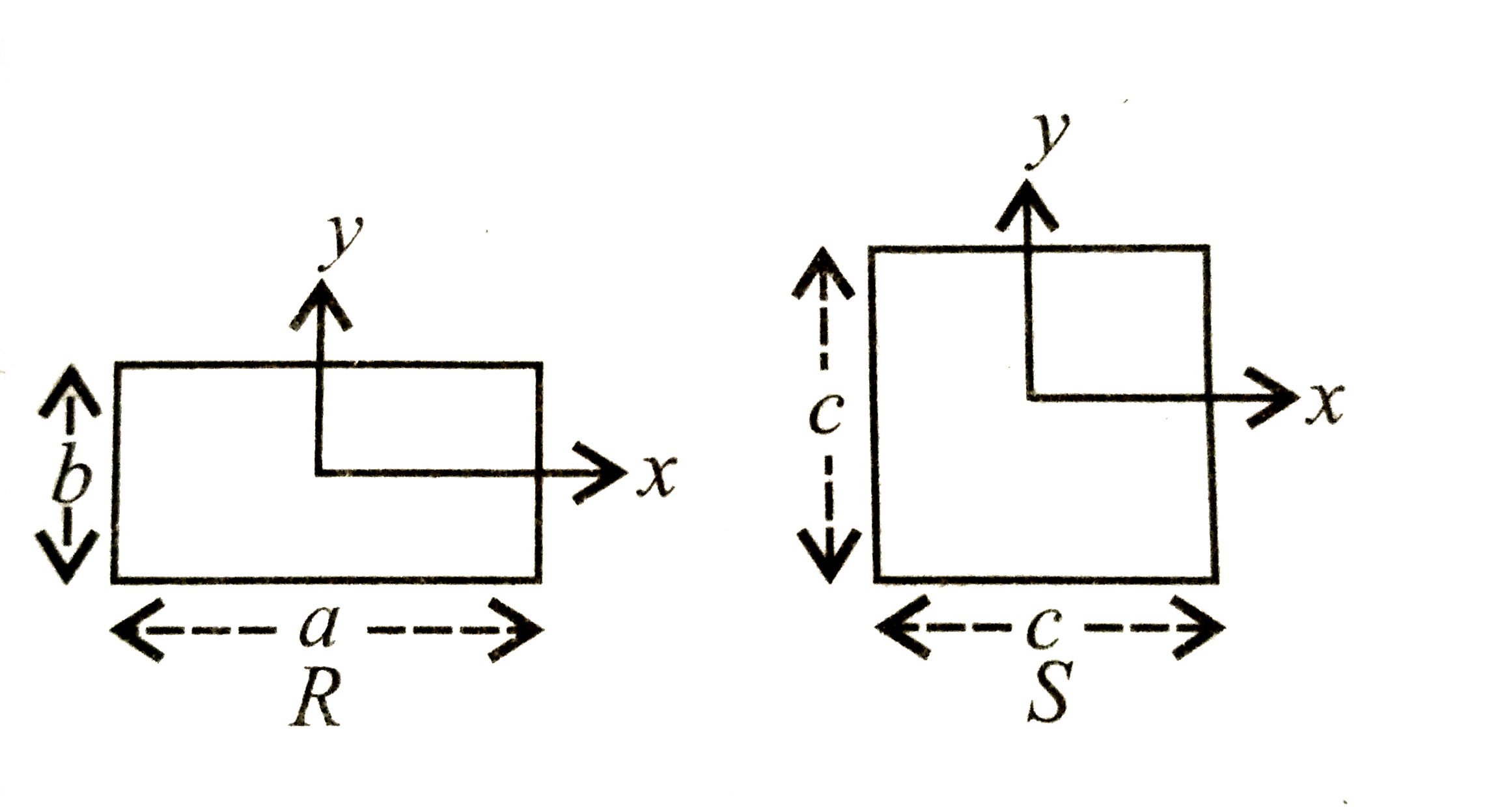
Topper's Solved these Questions
- SYSTEM OF PARTICLES AND ROTATIONAL MOTIONSBook:NCERT FINGERTIPSChapter:SYSTEM OF PARTICLES AND ROTATIONAL MOTIONSExercise:Kinematics Of Rotational Motion About A Fixed Axis
Explore 3 Videos
- SYSTEM OF PARTICLES AND ROTATIONAL MOTIONSBook:NCERT FINGERTIPSChapter:SYSTEM OF PARTICLES AND ROTATIONAL MOTIONSExercise:Dynamics Of Rotational Motion About A Fixed Axis
Explore 10 Videos
- SYSTEM OF PARTICLES AND ROTATIONAL MOTIONSBook:NCERT FINGERTIPSChapter:SYSTEM OF PARTICLES AND ROTATIONAL MOTIONSExercise:Moment Of Inertia
Explore 7 Videos
- PRACTICE PAPERSBook:NCERT FINGERTIPSChapter:PRACTICE PAPERSExercise:Practice Paper 3
Explore 50 Videos
- THERMAL PROPERTIES OF MATTERBook:NCERT FINGERTIPSChapter:THERMAL PROPERTIES OF MATTERExercise:Assertion And Reason
Explore 10 Videos
Similar Questions
A unifrom square plate S(sc) and a unifrom rectangular plate R(sb,a) have identical areas and mass [Fig.]
Show that
(i) IxR/IxS<1, (ii) IyR/IyS>1, (iii) IzR/IzS>1.

View SolutionA uniform square plate S(sc) and a unifrom rectangular plate R(sb,a) have identical areas and mass [Fig.]
Show that
(i) IxR/IxS<1, (ii) IyR/IyS>1, (iii) IzR/IzS>1.

View Solution
Knowledge Check
The moment of inertia of a thin square plate ABCD of uniform thickness about an axis passing through the centre O and perpendicular to the plane of the plate is
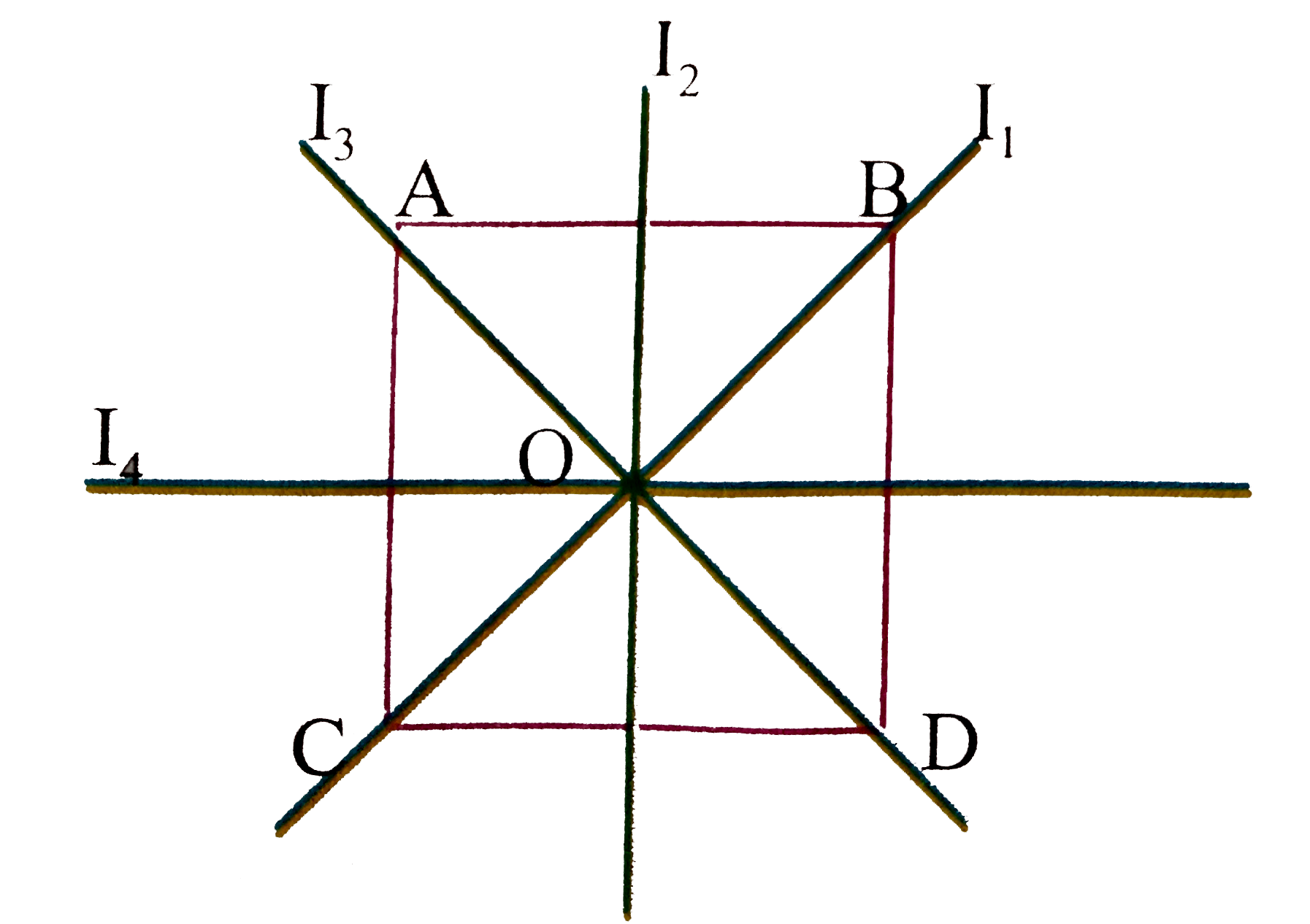
(a)I1+I2, (b)I2+I4
2I1+I3, (d) I1+2I3Aa,b are trueBb,c are trueCc,d are trueDb,d are trueThe moment of inertia of thin square plate ABCD of uniform thickness about an axis passing through the center O and perpendicular to the plane of the plate is
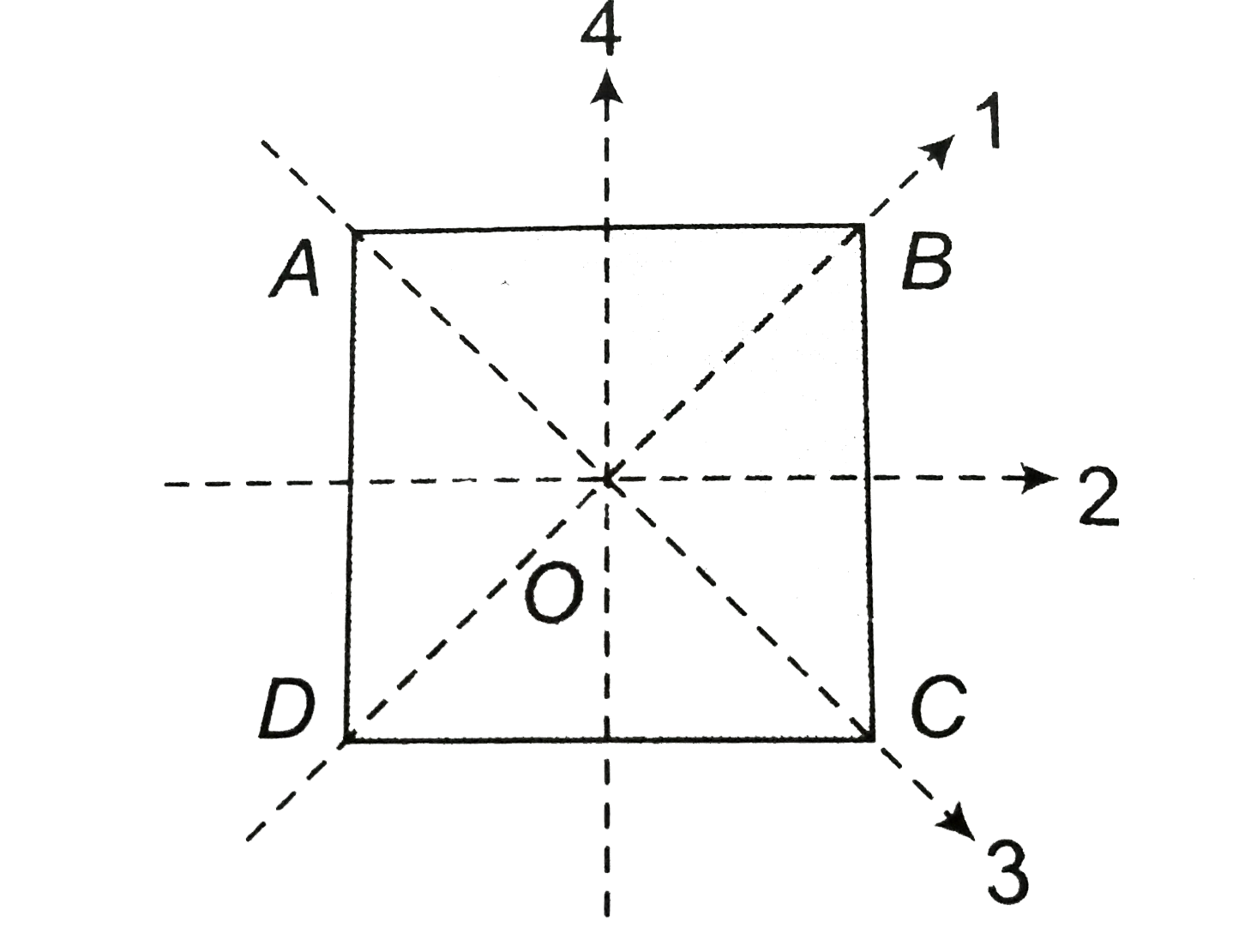
(i) I1+I2
(ii) I2+I4
(iii) I1+I3
(iv) I1+I2+I3+I4
where I1, I2, I3 and I4 are repectively moments of inertia about axes 1, 2, 3 and 4 which are in the plane of the planeA(i),(ii)B(i), (ii), (iii)C(ii), (iii)D(i), (iii)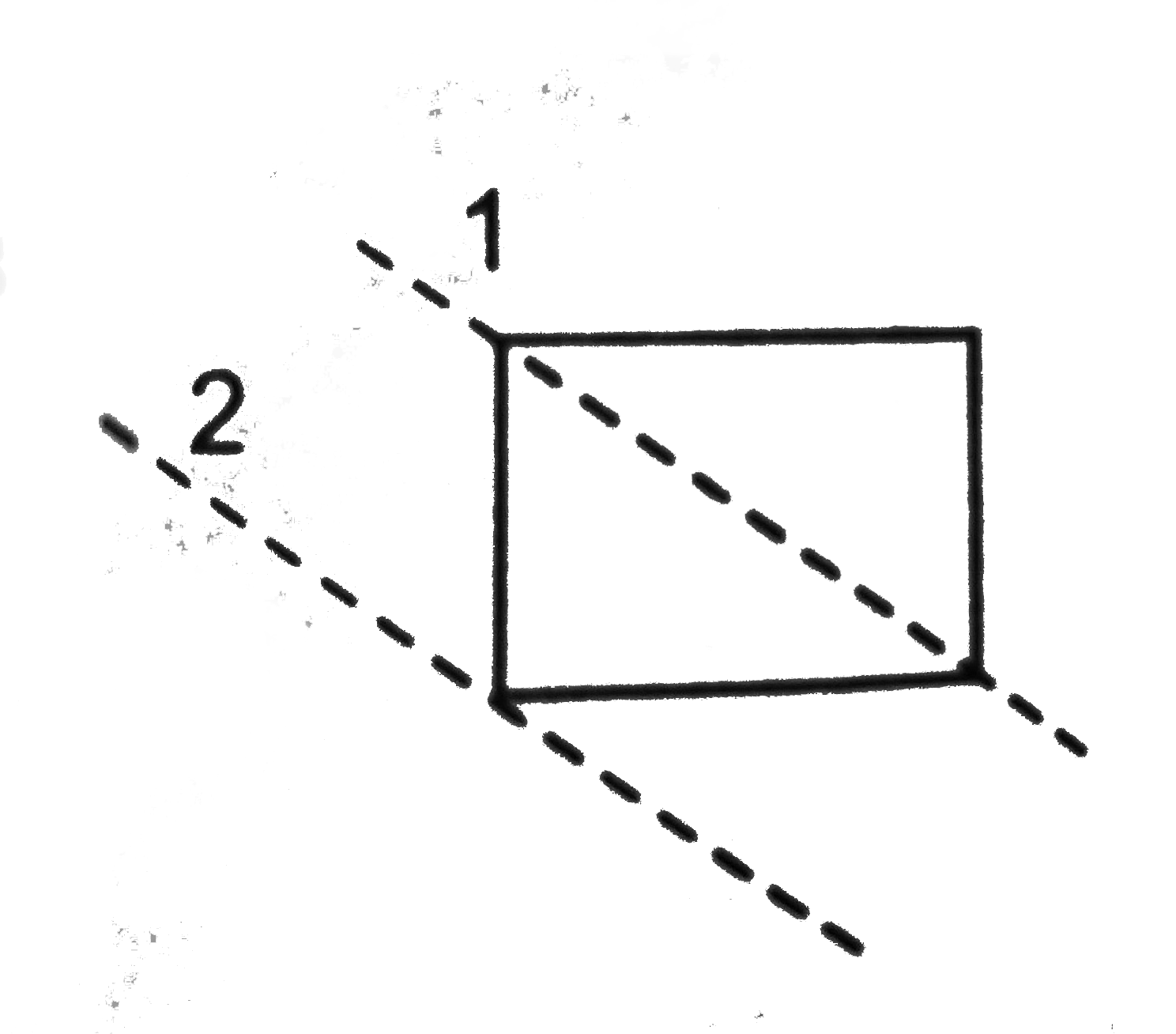
Let I1 and I2 be the moment of inertia of a uniform square plate about axes shown in the figure. Then the ratio I1:I2 isA1:17B1:127C1:712D1:7
Prove that : (i) adj I=I (ii) adj O=O (iii) I−1=I.
View SolutionFind the moment of inertia of a uniform rectangular plate of mass M and edges of length 'I' and 'b' about its axis passing through the centre and perpendicular to it.
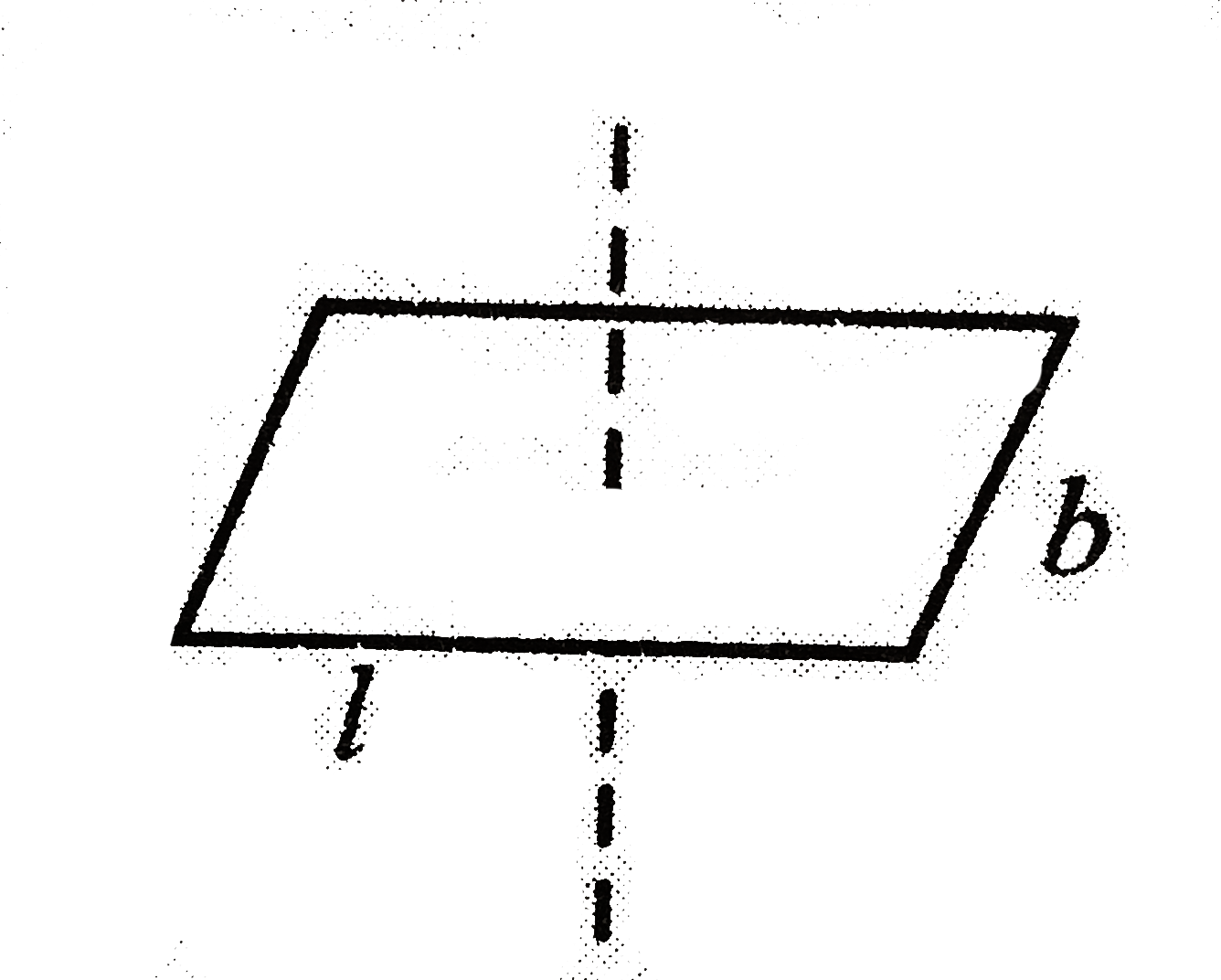
View SolutionThe magnitude of gratitational field intensities at distance r1 and r2 from the centre of a uniform solid sphere of radius R and mass M are I1 and I2 respectively. Find the ratio of I1/I2 if (a) r1>R and r2>R and (b) r1<R and r2<R (c ) r1>R and r2<R.
View SolutionConsider a uniform square plate shown in the figure. I1,I2,I3 and I4 are moment of inertia of the plate about the axes 1, 2, 3 and 4 respectively. Axes 1 and 2 are diagonals and 3 and 4 are lines passing through centre parallel to sides of the square. The moment of inertia of the plate about an axis passing through centre and perpendicular to the plane of the figure is equal to which of the followings.
(a) I3+I4
(b) I1+I3
(c) I2+I3
(d) 12(I1+I2+I3+I4)
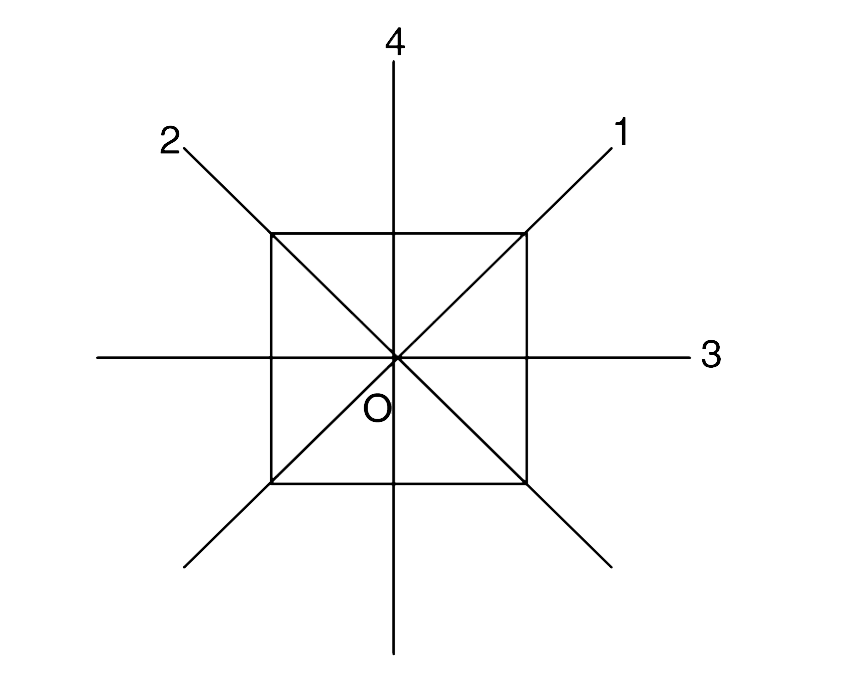
View SolutionThe ionization potential values of an element are in the following order I1<I2<<<<I3<I4<I5. The element is
View Solution